| [1] Evans MJ, Kaufman MH. Establishment in culture of pluripotential cells from mouse embryos. Nature. 1981; 292 (5819):154-156.
[2] Segers VF, Lee RT. Stem-cell therapy for cardiac disease. Nature. 2008; 451(7181):937-942.
[3] Schroeder T. Imaging stem-cell-driven regeneration in mammals. Nature. 2008; 453(7193):345-351.
[4] Close DM, Hahn RE, Patterson SS, et al. Comparison of human optimized bacterial luciferase, firefly luciferase, and green fluorescent protein for continuous imaging of cell culture and animal models. J Biomed Opt. 2011; 16(4):047003.
[5] Kircher MF, Gambhir SS, Grimm J. Noninvasive cell-tracking methods. Nat Rev Clin Oncol. 2011; 8(11):677-688.
[6] Zanzonico P. Principles of nuclear medicine imaging: planar, SPECT, PET, multi-modality, and autoradiography systems. Radiat Res. 2012; 177(4):349-364.
[7] Kremer AE, Elferink RPJO, Beuers U. Pathophysiology and current management of pruritus in liver disease. Clin Res Hepatol Gastroenterol. 2011; 35(2):89-97.
[8] Snykers S, De Kock J, Rogiers V, et al. In vitro differentiation of embryonic and adult stem cells into hepatocytes: state of the art. Stem cells. 2009; 27(3):577-605.
[9] Yamada T, Yoshikawa M, Kanda S, et al. In vitro differentiation of embryonic stem cells into hepatocyte-like cells identified by cellular uptake of indocyanine green. Stem Cells. 2002; 20(2): 146-154.
[10] Kanda S, Shiroi A, Ouji Y, et al. In vitro differentiation of hepatocyte-like cells from embryonic stem cells promoted by gene transfer of hepatocyte nuclear factor 3 beta. Hepatol Res. 2003; 26(3):225-231.
[11] Chinzei R, Tanaka Y, Shimizu-Saito K, et al. Embryoid-body cells derived from a mouse embryonic stem cell line show differentiation into functional hepatocytes. Hepatology. 2002; 36(1):22-29.
[12] Cao F, Drukker M, Lin S, et al. Molecular Imaging of Embryonic Stem Cell Misbehavior and Suicide Gene Ablation. Cloning Stem Cells. 2007; 9(1):107-117.
[13] Zaehres H, Lensch MW, Daheron L, et al. High-efficiency RNA interference in human embryonic stem cells. Stem cells. 2005; 23(3):299-305.
[14] Chambers I, Colby D, Robertson M, et al. Functional expression cloning of Nanog, a pluripotency sustaining factor in embryonic stem cells. Cell. 2003; 113(5):643-655.
[15] Moriya K, Yoshikawa M, Saito K, et al. Embryonic stem cells develop into hepatocytes after intrasplenic transplantation in CCl4-treated mice. World J Gastroenterol. 2007;13(6):866-873.
[16] Wu JC, Chen IY, Sundaresan G, et al. Molecular imaging of cardiac cell transplantation in living animals using optical bioluminescence and positron emission tomography. Circulation. 2003; 108(11):1302-1305.
[17] Chen IY, Wu JC. Cardiovascular Molecular Imaging Focus on Clinical Translation. Circulation. 2011; 123(4):425-443.
[18] Oostendorp M, Douma K, Wagenaar A, et al. Molecular magnetic resonance imaging of myocardial angiogenesis after acute myocardial infarction. Circulation. 2010; 121(6): 775-783.
[19] Wang J, Najjar A, Zhang S, et al. Molecular Imaging of Mesenchymal Stem Cell Mechanistic Insight Into Cardiac Repair After Experimental Myocardial Infarction. Cir Cardiovasc Imaging. 2012; 5(1):94-101.
[20] Li Z, Wu JC, Sheikh AY, et al. Differentiation, survival, and function of embryonic stem cell-derived endothelial cells for ischemic heart disease. Circulation. 2007; 116(11):I46-I54.
[21] Ebert SN, Taylor DG, Nguyen HL, et al. Noninvasive tracking of cardiac embryonic stem cells in vivo using magnetic resonance imaging techniques. Stem Cells. 2007; 25(11): 2936-2944.
[22] Hwang DW, Kang JH, Jeong JM, et al. Noninvasive in vivo monitoring of neuronal differentiation using reporter driven by a neuronal promoter. Eur J Nucl Med Mol Imaging. 2008; 35(1):135-145.
[23] Bossolasco P, Cova L, Levandis G, et al. Noninvasive near-infrared live imaging of human adult mesenchymal stem cells transplanted in a rodent model of Parkinson's disease. Int J Nanomedicine. 2012; 7:435-447.
[24] De Vocht N, Reekmans K, Bergwerf I, et al. Multimodal imaging of stem cell implantation in the central nervous system of mice. J Vis Exp. 2012; (64):e3906.
[25] Ozdemir M, Attar A, Kuzu I, et al. Stem cell therapy in spinal cord injury: in vivo and postmortem tracking of bone marrow mononuclear or mesenchymal stem cells. Stem Cell Rev. 2012; 8(3):953-962.
[26] Wang J, Tian M, Zhang H. PET molecular imaging in stem cell therapy for neurological diseases. Eur J Nucl Med Mol Imaging. 2011; 38(10):1926-1938.
[27] Junt T, Schulze H, Chen Z, et al. Dynamic visualization of thrombopoiesis within bone marrow. Science. 2007; 317 (5845):1767-1770.
[28] Barrett O, Sottocornola R, Lo Celso C. In vivo imaging of hematopoietic stem cells in the bone marrow niche. Methods Mol Biol. 2012; 916:231-242.
[29] McCracken MN, Gschweng EH, Nair-Gill E, et al. Long-term in vivo monitoring of mouse and human hematopoietic stem cell engraftment with a human positron emission tomography reporter gene. Pro Natl Acad Sci USA. 2013; 110(5): 1857-1862.
[30] Rosland GV, Svendsen A, Torsvik A, et al. Long-term Cultures of Bone Marrow-Derived Human Mesenchymal Stem Cells Frequently Undergo Spontaneous Malignant Transformation. Cancer Res. 2009; 69(13):5331-5339.
[31] Wang Y, Huso DL, Harrington J, et al. Outgrowth of a transformed cell population derived from normal human BM mesenchymal stem cell culture. Cytotherapy. 2005; 7(6): 509-519.
[32] Monnier D, Gourmelon P, Gorin NC. Clinical-grade production of human mesenchymal stromal cells: occurrence of aneuploidy without transformation. Blood. 2010; 115(8): 1549-1553.
[33] Bernardo ME, Fibbe WE. Safety and efficacy of mesenchymal stromal cell therapy in autoimmune disorders. Ann N Y Acad Sci. 2012; 1266:107-117.
[34] Goldring CE, Duffy PA, Benvenisty N, et al. Assessing the safety of stem cell therapeutics. Cell Stem Cell. 2011; 8(6):618-628.
[35] Gropp M, Shilo V, Vainer G, et al. Standardization of the Teratoma Assay for Analysis of Pluripotency of Human ES Cells and Biosafety of Their Differentiated Progeny. PLoS One. 2012;7(9):e45532. doi: 10.1371/journal.pone.0045532.
[36] Teramoto K, Hara Y, Kumashiro Y, et al. Teratoma formation and hepatocyte differentiation in mouse liver transplanted with mouse embryonic stem cell-derived embryoid bodies. Transplant Proc. 2005; 37(1):285-286.
[37] Bukong TN, Lo T, Szabo G, et al. Novel developmental biology-based protocol of embryonic stem cell differentiation to morphologically sound and functional yet immature hepatocytes. Liver Int. 2012; 32(5):732-741.
[38] Li HY, Chen Y, Chen YJ, et al. Reprogramming induced pluripotent stem cells in the absence of c-Myc for differentiation into hepatocyte-like cells. Biomaterials. 2011; 32(26):5994-6005.
[39] Woo DH, Kim SK, Lim HJ, et al. Direct and Indirect Contribution of Human Embryonic Stem Cell-Derived Hepatocyte-Like Cells to Liver Repair in Mice. Gastroenterology. 2012; 142(3):602-611.
[40] Cai J, Zhao Y, Liu Y, et al. Directed differentiation of human embryonic stem cells into functional hepatic cells. Hepatology. 2007; 45(5):1229-1239. |
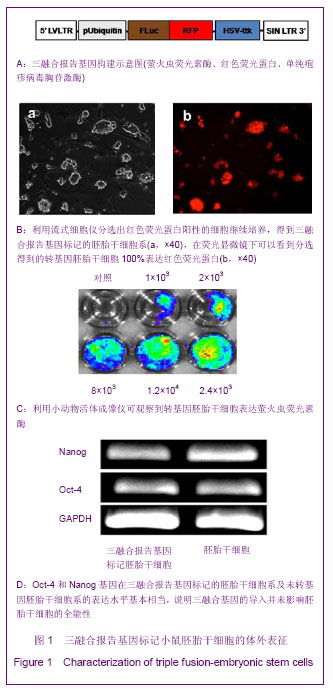
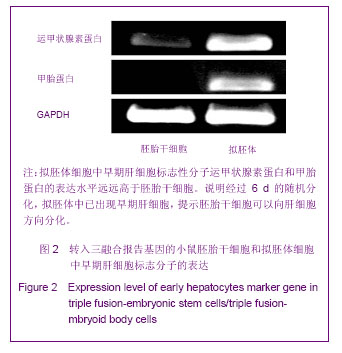
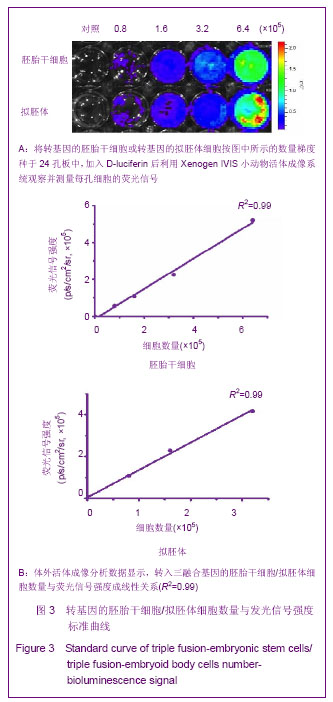
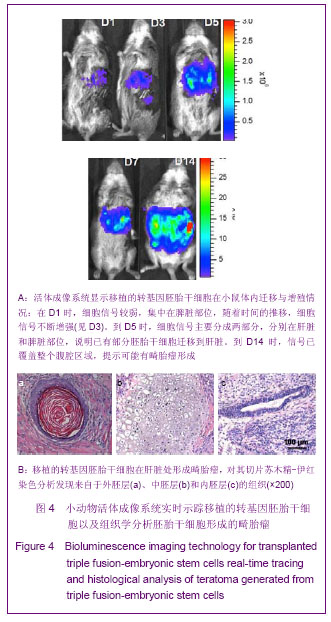
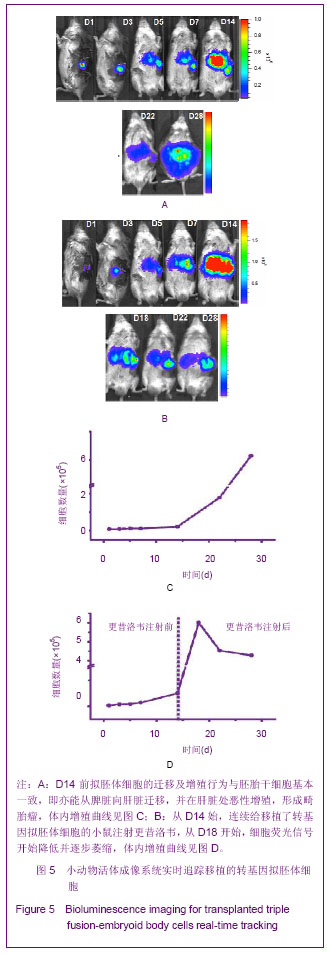
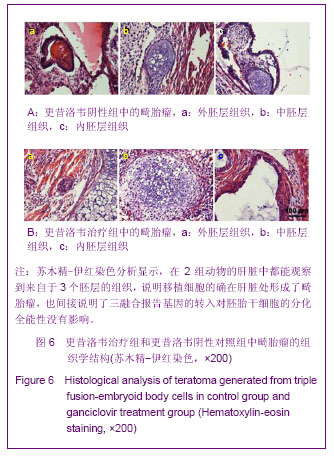
.jpg)
.jpg)